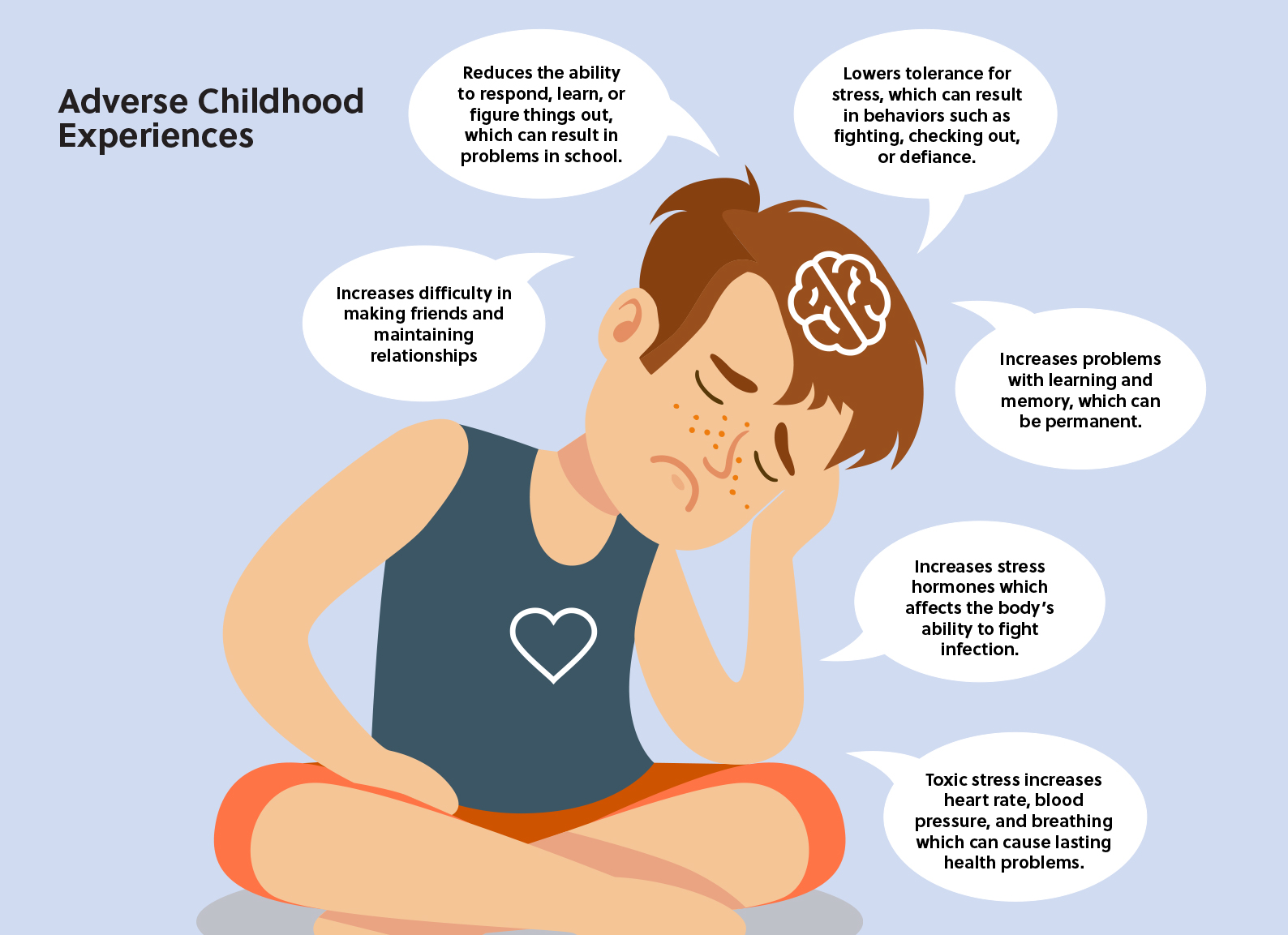Adverse Childhood Experiences, commonly referred to as ACEs, are potentially traumatic events that occur during childhood (0–17 years). These experiences have been shown to significantly influence a child’s development, health, and well-being, often with long-lasting effects into adulthood. Understanding ACEs is crucial for parents, educators, healthcare professionals, and policymakers to create supportive environments that foster resilience and mitigate the negative outcomes of early adversity.
What are types of adverse childhood experiences or events?
ACEs encompass a range of experiences that can disrupt a child’s sense of safety, stability, and bonding. These include:
- Abuse: Physical, emotional, or sexual abuse.
- Neglect: Emotional or physical neglect.
- Household Dysfunction: Living with family members who struggle with mental illness, substance abuse, or incarceration, or experiencing parental separation, domestic violence, or homelessness.
While ACEs highlight some of the most severe challenges children may face, it is important to note that they are not exhaustive. Social determinants of health, such as poverty, discrimination, and community violence, can amplify the impact of ACEs.
How ACEs Affect Development
ACEs disrupt the brain’s development, especially in areas that control emotions, decision-making, and stress regulation. Prolonged exposure to stress, known as toxic stress, can lead to the overactivation of the stress response system, resulting in:
- Poor academic performance.
- Difficulty forming healthy relationships.
- Increased risk of substance abuse.
- Chronic health conditions like heart disease, diabetes, and depression in adulthood.
ACEs and the Lifelong Impact
Research has shown a strong dose-response relationship between the number of ACEs and the likelihood of experiencing negative health and social outcomes. The groundbreaking Adverse Childhood Experiences Study (1998) by the Centers for Disease Control and Prevention (CDC) and Kaiser Permanente found that individuals with higher ACE scores were significantly more likely to experience:
- Mental health disorders such as anxiety, depression, and PTSD.
- Risky behaviors, including smoking, alcohol misuse, and early sexual activity.
- Chronic illnesses, including obesity, cancer, and autoimmune diseases.
Building Resilience: The Key to Overcoming ACEs
While ACEs can have profound effects, they do not determine destiny. Resilience—the ability to recover from or adapt to adversity—can buffer the negative impacts of ACEs. Protective factors include:
- Supportive Relationships: A stable and nurturing relationship with at least one adult can make a significant difference.
- Community Support: Access to community resources, safe spaces, and supportive services promotes well-being.
- Skill Building: Teaching children emotional regulation, problem-solving, and interpersonal skills helps them navigate challenges.
- Policy Interventions: Programs such as trauma-informed care in schools, parenting support programs, and mental health initiatives address ACEs at a systemic level.
What Can You Do?
Understanding ACEs is the first step in making a difference. Here’s how you can contribute:
- Educate Yourself: Learn about ACEs and their impacts.
- Advocate: Support policies and programs that address childhood adversity.
- Be Present: Create safe, supportive environments for children in your care.
- Seek Help: Encourage early intervention and access to mental health services.
Conclusion
Adverse Childhood Experiences are a critical lens through which to understand and address the challenges faced by many children and adults. By fostering awareness, building resilience, and advocating for systemic change, we can break the cycle of adversity and create a brighter, healthier future for all children.
🎥 Watch: Understanding ACEs video
This short video explains how early childhood experiences—both positive and negative—shape brain development, health, and behavior. It’s a good introduction to Adverse Childhood Experiences (ACEs), helping us understand how trauma can have lasting effects and how resilience and support can change the story.
